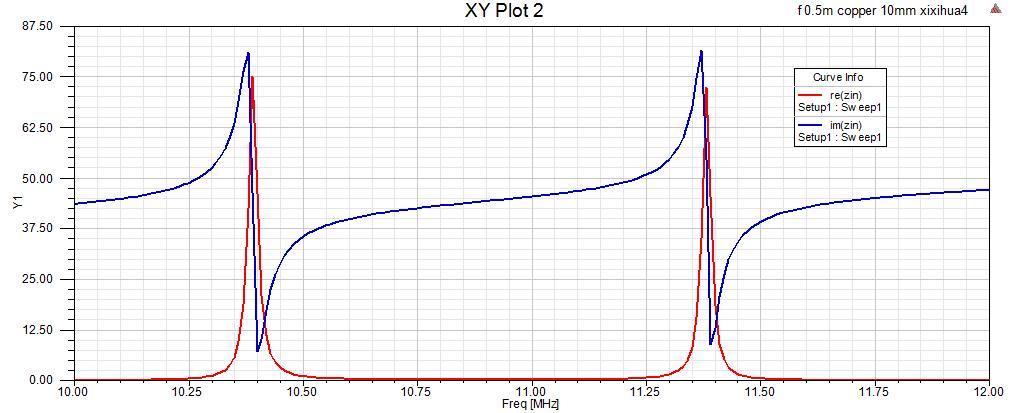wideband matching for wireless power transfer via coupled magnetic resonance
I am working on wireless power transfer.Since we need a large output power(about 1kW), so i want to insert an impedance matching network between the power source(impedance 50ohm) and the coil to protect the source.The center frequency is 11MHz, while taking the frequency splitting into account, the operating frequency is 10MHZ to 12MHZ, so a wideband matching network is needed.
The problem is that the input impedance(viewed from the power source) varies dramatically with frequency. First picture shows s11 and s21 of the original system and second picture shows respectively the real part (the red curve)and imaginary part(the blue curve) of the input impedance.
Anyone could give me some tips on the matching work design or other ways to protect the power source
I really appreciate it

Maybe I am wrong but "resonance"means that both circuits should resonate at the same frequency. No wideband tuning.
Generally, short-wave power generators utilize SWR bridges to detect a load mismatch and cut source power. This way should be used in your case also for the absence of load circuit.
Consult radio-amateur literature on details. ARRL Radio Amateurs' Handbook is recommended.
If the real part is 0 ohms, how is it going to dissipate your power?
Ok. How did you conclude your system requires a wide band matching network ? Considering your operating frequency is from 10-12MHz, your BW is close to 1.5MHz. To be qualified as a wideband circuit, BW should at least be an octave.
Anyways you could use transformers for a large transformation ratio, but to build it it might be a bit complex considering your output power range. But since it's also low frequencies I don't see any other way other than using ferrite beads through transformers. Also, S11 andS21 doesn't make sense at all. It's just shows two high impedance regions.
Short story is there's really no good way to get broadband power transfer into a high Q load. If you actually need broadband power transfer, you must rethink your approach. But I don't see any reason why you can't use one of those two narrowband modes to transfer power alone.
